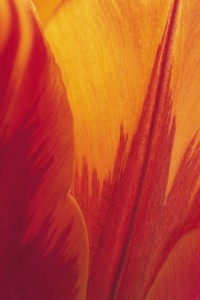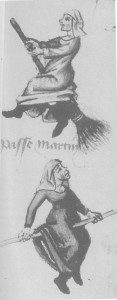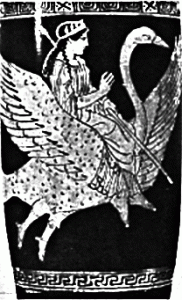 She Is Everywhere! Volume 3: An Anthology of Writings in Womanist/Feminist SpiritualityEdited by Mary Saracino and Mary Beth Moser.I had a chance to examine the pdf version of this volume and would recommend it to Goddess worshipers as well worth your time. The volume is quite large, over 400 pages, and contains a mixture of scholarly articles, political essays, personal experiences, poetry, fiction and art. Female divinities pagan and Christian from around the world are represented.Several of the articles break new ground. Of particular note is “Of Diana, Witches, and Fairies” from Randy P. Conner’s forthcoming The Pagan Heart of the West. Conner examines evidence of a continuing pan-European worship of Diana (or a goddess identified with Diana) throughout the middle ages and into early modern times. This is important, as academic scholars in English speaking countries have for some decades considered Diana’s worship to have been completely eradicated by early Christianity.Another groundbreaking selection is Helen Hye-Sook Hwang’s “Making the Gynocentric Case: Mago, the Great Goddess of East Asia and Her Tradition Magoism.” Hwang’s presentation of Mago will likely challenge perceptions of Asian goddess worship which are built around the popular deities Kwan Yin and Amaterasu.Laura Amazzone makes a good case for kava plant ceremonies originating as menstural rituals in “The Fijian Kava Ceremony: An Ancient Menstrual Ritual?”The affinity of the Romani for Saint Sara is explored by Malgorzata Oleszkiewicz-Peralba in “Saint Sara-La-Kali: The Romani Black Madonna.” This article will intrigue those interested in the Black Madonna, pagan elements of Christianity, Romani spirituality, the Cathars and the goddess Kali.Max Dashu’s “The Meanings of ‘Goddess'” discusses the ways that goddess worship has been invalidated or erased in patriarchies to the present day, and her broad knowledge base and accessible writing style make this a good article to save for future reference. She also discusses the reverence for maternal divinity in spiritual practices not usually considered goddess-based.I was less impressed with Lucia Chiavola Birnbaum’s “Story, gifts, standpoint, and methodologies of feminist cultural history,” in which she recounts her journey to write dark mother: african origins and godmothers. Perhaps if I had read this book, I would have found her narrative more compelling. Leslene della-Madre in “The Luminous Dark Mother” discusses Birnbaum’s work in more depth, but both of these articles left me unconvinced about the African goddess-source theory. The idea that homo sapiens sapiens originated in southeast Africa and first spread out from that region about 70,000 years ago is now widely accepted, and the possibility of tracing a common religious thread to this time period is tantalizing, especially given the similarities of earth-based religions the world over. Yet no evidence or even convincing conjecture for a proto-typical African goddess is present in either of these articles. Della-Madre’s discussion of the goddess Isis adds nothing to the theory, since Isis is a once obscure goddess who rose to prominence during a period of heavy Greek influence. Basing an African religious genesis model on Egypt might be plausible, given that the long historical record shows Egyptian religion to have been highly conservative, yet early Egyptian religion was based on animal worship and ancestor reverence, with anthropomorphic deities emerging over time. This is echoed elsewhere in Africa and in Asia and Europe by the heavy animal emphasis in paleolithic cave and rock art, including the earliest rock art from the Har Karkom site in Israel on which Birnbaum bases part of her theory. The archeological and anthropological research that I’m aware of places the emergence of widespread goddess icons long after the first diaspora. Africa may have significantly influenced the evolution of goddess worship, but with Africa itself being influenced by Asia and Europe by this time, it must be considered a co-creator of goddess religion rather than a source.I did not care for Claudia von Werlhof’s “The Interconnectedness of All Being: A New Spirituality for a New Civilization.” Von Werlhof brought up anti-globalization early in her essay, yet despite the exigency of the issue her subsequent analysis was rambling, lacked cohesiveness and did not offer concrete solutions. The transcendentalists delineated a theory of interconnectedness that was much more coherent, and they were also more effective at relating this theory to the politics of the day. Nonetheless I take the presence of this article as an encouraging glimmer of hope that academics are moving away from the travesty that is postmodern philosophy and political theory.I most enjoyed the experiential narratives of women connecting with their feminine divinity. Nicole Margiasso-Tran talks about the worship of Brigit in Ireland today in “Healing Wells and Sacred Fire: A Pilgrimage to Brigit’s Land.” Mischa Geracoulis talks about her body hair in “Secret Hair: A Postmodern Self-portrait in Words.” Joanna Clapps-Herman describes her grandmother’s confrontation with abuse of religious authority in “Lotions, Potions and Solutions.” One other jewel in this volume is a translation by Harita Meenee of the “Orphic Hymn to Nature.” This is a wonderful invocation to the Goddess that can be easily incorporated in ritual.
She Is Everywhere! Volume 3: An Anthology of Writings in Womanist/Feminist SpiritualityEdited by Mary Saracino and Mary Beth Moser.I had a chance to examine the pdf version of this volume and would recommend it to Goddess worshipers as well worth your time. The volume is quite large, over 400 pages, and contains a mixture of scholarly articles, political essays, personal experiences, poetry, fiction and art. Female divinities pagan and Christian from around the world are represented.Several of the articles break new ground. Of particular note is “Of Diana, Witches, and Fairies” from Randy P. Conner’s forthcoming The Pagan Heart of the West. Conner examines evidence of a continuing pan-European worship of Diana (or a goddess identified with Diana) throughout the middle ages and into early modern times. This is important, as academic scholars in English speaking countries have for some decades considered Diana’s worship to have been completely eradicated by early Christianity.Another groundbreaking selection is Helen Hye-Sook Hwang’s “Making the Gynocentric Case: Mago, the Great Goddess of East Asia and Her Tradition Magoism.” Hwang’s presentation of Mago will likely challenge perceptions of Asian goddess worship which are built around the popular deities Kwan Yin and Amaterasu.Laura Amazzone makes a good case for kava plant ceremonies originating as menstural rituals in “The Fijian Kava Ceremony: An Ancient Menstrual Ritual?”The affinity of the Romani for Saint Sara is explored by Malgorzata Oleszkiewicz-Peralba in “Saint Sara-La-Kali: The Romani Black Madonna.” This article will intrigue those interested in the Black Madonna, pagan elements of Christianity, Romani spirituality, the Cathars and the goddess Kali.Max Dashu’s “The Meanings of ‘Goddess'” discusses the ways that goddess worship has been invalidated or erased in patriarchies to the present day, and her broad knowledge base and accessible writing style make this a good article to save for future reference. She also discusses the reverence for maternal divinity in spiritual practices not usually considered goddess-based.I was less impressed with Lucia Chiavola Birnbaum’s “Story, gifts, standpoint, and methodologies of feminist cultural history,” in which she recounts her journey to write dark mother: african origins and godmothers. Perhaps if I had read this book, I would have found her narrative more compelling. Leslene della-Madre in “The Luminous Dark Mother” discusses Birnbaum’s work in more depth, but both of these articles left me unconvinced about the African goddess-source theory. The idea that homo sapiens sapiens originated in southeast Africa and first spread out from that region about 70,000 years ago is now widely accepted, and the possibility of tracing a common religious thread to this time period is tantalizing, especially given the similarities of earth-based religions the world over. Yet no evidence or even convincing conjecture for a proto-typical African goddess is present in either of these articles. Della-Madre’s discussion of the goddess Isis adds nothing to the theory, since Isis is a once obscure goddess who rose to prominence during a period of heavy Greek influence. Basing an African religious genesis model on Egypt might be plausible, given that the long historical record shows Egyptian religion to have been highly conservative, yet early Egyptian religion was based on animal worship and ancestor reverence, with anthropomorphic deities emerging over time. This is echoed elsewhere in Africa and in Asia and Europe by the heavy animal emphasis in paleolithic cave and rock art, including the earliest rock art from the Har Karkom site in Israel on which Birnbaum bases part of her theory. The archeological and anthropological research that I’m aware of places the emergence of widespread goddess icons long after the first diaspora. Africa may have significantly influenced the evolution of goddess worship, but with Africa itself being influenced by Asia and Europe by this time, it must be considered a co-creator of goddess religion rather than a source.I did not care for Claudia von Werlhof’s “The Interconnectedness of All Being: A New Spirituality for a New Civilization.” Von Werlhof brought up anti-globalization early in her essay, yet despite the exigency of the issue her subsequent analysis was rambling, lacked cohesiveness and did not offer concrete solutions. The transcendentalists delineated a theory of interconnectedness that was much more coherent, and they were also more effective at relating this theory to the politics of the day. Nonetheless I take the presence of this article as an encouraging glimmer of hope that academics are moving away from the travesty that is postmodern philosophy and political theory.I most enjoyed the experiential narratives of women connecting with their feminine divinity. Nicole Margiasso-Tran talks about the worship of Brigit in Ireland today in “Healing Wells and Sacred Fire: A Pilgrimage to Brigit’s Land.” Mischa Geracoulis talks about her body hair in “Secret Hair: A Postmodern Self-portrait in Words.” Joanna Clapps-Herman describes her grandmother’s confrontation with abuse of religious authority in “Lotions, Potions and Solutions.” One other jewel in this volume is a translation by Harita Meenee of the “Orphic Hymn to Nature.” This is a wonderful invocation to the Goddess that can be easily incorporated in ritual.
Year: 2012
Bird Dreams
May 18, 2012I’m in the middle of production for the audio meditation to accompany my (forthcoming) book Invoking Animal Magic. I’ve been collecting bird sounds to use in the background, and I’ve started to become absorbed by the voices in the woods, ponds and fields. Not categorizing them, exactly, but listening to what they have to say, trying to understand the message in a visceral way. After listening to one loud, lengthy, interactive conversation shortly after dawn, I started to wonder if these little birds were talking about their dreams. What would a bird dream about? It takes a lot of observation to get inside their heads and understand the logic of their mundane lives. In the dream state, where possibilities expand, what would be the expanded horizon of a creature that can already fly? It seems like the dreams of birds would be so far beyond definition that they could not be described in words. Maybe in music….University of Chicago Medical Center thinks they have solved the question of what birds dream about, but to me it sounds like they’re only describing the problem.
Eclecticism or Incompetence?
May 11, 2012 I went to a spiritual event recently that’s been troubling me. It was sortof Native American, pulling in concepts from disparate tribes, but then it included elements of Wicca, without any mention of goddesses or gods. The boundaries of witchcraft were approached but safely skirted while popularized tribal practices were incorporated out of context. I struggled with the question of whether I found the pageant more embarrassing or offensive.I have a high tolerance for unorthodoxy, a respect for creativity and a cautious appreciation for those who can seamlessly synthesize shamanic practices across cultures, but the effect of this particular ceremony was chaotic. Nothing was meshing well, and the whole thing left me feeling rather flat.What a lot of people call eclecticism can be called other names: appropriation, lack of cohesion, dilettantism, laziness, fear of witchcraft, disrespect, not knowing better. It’s one thing to study one or more traditions in depth and gradually incorporate other elements; it’s another to jumble things together with no understanding of context. A spiritual practice is not a shopping cart; you can’t just grab what strikes your fancy from every aisle. Or you can, but you won’t get very far with it.
I went to a spiritual event recently that’s been troubling me. It was sortof Native American, pulling in concepts from disparate tribes, but then it included elements of Wicca, without any mention of goddesses or gods. The boundaries of witchcraft were approached but safely skirted while popularized tribal practices were incorporated out of context. I struggled with the question of whether I found the pageant more embarrassing or offensive.I have a high tolerance for unorthodoxy, a respect for creativity and a cautious appreciation for those who can seamlessly synthesize shamanic practices across cultures, but the effect of this particular ceremony was chaotic. Nothing was meshing well, and the whole thing left me feeling rather flat.What a lot of people call eclecticism can be called other names: appropriation, lack of cohesion, dilettantism, laziness, fear of witchcraft, disrespect, not knowing better. It’s one thing to study one or more traditions in depth and gradually incorporate other elements; it’s another to jumble things together with no understanding of context. A spiritual practice is not a shopping cart; you can’t just grab what strikes your fancy from every aisle. Or you can, but you won’t get very far with it.
Gratitude Stalks You
May 4, 2012 Gratitude stalks youUnawares you are ambushedSmile in surpriseEarlier this week I was in the woods at a stream swollen with spring, and a familiar situation overtook me. It’s similar to coming upon a beautiful scene by surprise or having an unusual interaction with an animal–and of course you left the camera at home. This is the situation of coming upon a sublime space, maybe in some ordinary place where you’ve been many times, and your heart is unexpectedly opened and full to overflowing. Perhaps you can hear the voices of water, rocks and trees. This is the time for ritual, but you have no offering. A simple thank you does not seem like enough. What gift can you leave to signify the importance of this moment?Fortunately, a priestess twenty years ago taught me that you can leave a strand of hair as an offering. Trees love hair–that’s why they grab at your head as you walk down the trail. In the desert you can offer a few drops from your water bottle, but where I live a water offering seems superfluous. (It’s one thing we have plenty of!)There are many offerings you can make when you come with just yourself.If you have a few coins in your pocket, trees also love money. They prefer coin to paper money. Water and earth like coins as well.A gesture can be an offering: a hug, kiss or pat on a rock or tree. Touch water and rub your forehead. Spinning or jumping are more exhuberant gestures.The spoken word is a profound offering. A prayer said out loud. A song, not necessarily a spiritual song but even a popular song that comes into your head at the moment. Conversation can be a wonderful gift that trees and animals value. They might not understand your words, but they hear the tone and cadence. Animals particularly like the higher pitched, more melodic voices of children and women.If the ground is sandy, you can write a message with a stick: a symbol, a picture, a word. Pebbles can also be arranged to send a message.What other empty-handed offerings can you suggest? Leave a message in the comments.
Gratitude stalks youUnawares you are ambushedSmile in surpriseEarlier this week I was in the woods at a stream swollen with spring, and a familiar situation overtook me. It’s similar to coming upon a beautiful scene by surprise or having an unusual interaction with an animal–and of course you left the camera at home. This is the situation of coming upon a sublime space, maybe in some ordinary place where you’ve been many times, and your heart is unexpectedly opened and full to overflowing. Perhaps you can hear the voices of water, rocks and trees. This is the time for ritual, but you have no offering. A simple thank you does not seem like enough. What gift can you leave to signify the importance of this moment?Fortunately, a priestess twenty years ago taught me that you can leave a strand of hair as an offering. Trees love hair–that’s why they grab at your head as you walk down the trail. In the desert you can offer a few drops from your water bottle, but where I live a water offering seems superfluous. (It’s one thing we have plenty of!)There are many offerings you can make when you come with just yourself.If you have a few coins in your pocket, trees also love money. They prefer coin to paper money. Water and earth like coins as well.A gesture can be an offering: a hug, kiss or pat on a rock or tree. Touch water and rub your forehead. Spinning or jumping are more exhuberant gestures.The spoken word is a profound offering. A prayer said out loud. A song, not necessarily a spiritual song but even a popular song that comes into your head at the moment. Conversation can be a wonderful gift that trees and animals value. They might not understand your words, but they hear the tone and cadence. Animals particularly like the higher pitched, more melodic voices of children and women.If the ground is sandy, you can write a message with a stick: a symbol, a picture, a word. Pebbles can also be arranged to send a message.What other empty-handed offerings can you suggest? Leave a message in the comments.
Blessings of May!
May 1, 2012 Some awesome celebrations for Beltane going on last night–wasn’t the energy pablpable? I was alone myself, and I had trouble lighting the fire because it was drizzling. Then I remembered that the purification at Beltane is from the smoke that the brush-fires generate. That’s why they used to drive the cattle between two fires. So, I used lots of incense in the fire pit. It was beautiful, and worked like a charm.
Some awesome celebrations for Beltane going on last night–wasn’t the energy pablpable? I was alone myself, and I had trouble lighting the fire because it was drizzling. Then I remembered that the purification at Beltane is from the smoke that the brush-fires generate. That’s why they used to drive the cattle between two fires. So, I used lots of incense in the fire pit. It was beautiful, and worked like a charm.
The Witch’s Broom, part IV
April 27, 2012

The Strange House in the Woods
April 20, 2012
Bird Companions of the Goddess: A quiz
April 12, 2012
| OwlGooseRavenFalconVultureDovePelicanWoodpeckerEagle | Baba YagaMorriganMarsAthenaLughFreyaAphroditeAstarteMut |
Answers are here.Feel free to add other goddess and god associations for these birds in the comments.
Adrienne Rich, 1929-2012
April 6, 2012 And if I’ve written in passion,Live, Julia! what was I writingbut my own pledge to myselfwhere the love of women is rooted?And what was I invokingbut the matrices we weaveweb upon web, delicate raftersflung in audacity to the prairie skies(from “For Julia in Nebraska,” in A Wild Patience Has Taken Me This Far)Adrienne Rich, the poet whose work exemplified the journey of twentieth century feminists to find an authentic individual and collective voice, died March 27th at 82. Her groundbreaking collection, The Dream of a Common Language, spoke to the soul of the emerging vision of women’s poetry. Her nonfiction work, Of Women Born took on the sentimentalized and trivialized subject of motherhood and examined it as a central influence on women’s lives and perspective.I did not know Rich, although I heard her perform many times. I chatted briefly with her once after a reading, and I recognized her occasionally in San Francisco or Santa Cruz – too shy to go up and speak to her, though she seemed open and approachable. Rich did not exude any air of self-importance, despite being recognized and celebrated as a gifted writer from an early age. Rich did, however, convey a sense that we – each of us women – were vitally important.The salient experience of being female in Western patriarchy is one of unimportance. Our thoughts, our feelings, our needs, our hopes, what we do, what we say, what happens to us – all are uninteresting, unimportant and irrelevant. If we sound shrill at times – to men, to other women, even to ourselves – it’s because we always feel like we’re never being heard.And Rich wrote as if she heard us. Rich could make the word “we” seem not like a conglomeration of unnamed entities but a symbiotic web of nourishment. She carried the conviction of our central, vital, incontrovertible importance. Not in spite of being women, but because.Rich was not, however, an unwavering source of upliftment. There was too much pain in her work. She suffered most of her life with arthritis, yet the pain that came through her work was an emotional one, almost an impersonal one, the pain of humanity and especially of women. It was too much to take in heavy doses, and I found myself drifting away from Rich’s poetry – and then being pulled back occasionally to the strength of that conviction: that our deeds, our experiences and our dreams are vital to the continuity of history – and to all that lies ahead.
And if I’ve written in passion,Live, Julia! what was I writingbut my own pledge to myselfwhere the love of women is rooted?And what was I invokingbut the matrices we weaveweb upon web, delicate raftersflung in audacity to the prairie skies(from “For Julia in Nebraska,” in A Wild Patience Has Taken Me This Far)Adrienne Rich, the poet whose work exemplified the journey of twentieth century feminists to find an authentic individual and collective voice, died March 27th at 82. Her groundbreaking collection, The Dream of a Common Language, spoke to the soul of the emerging vision of women’s poetry. Her nonfiction work, Of Women Born took on the sentimentalized and trivialized subject of motherhood and examined it as a central influence on women’s lives and perspective.I did not know Rich, although I heard her perform many times. I chatted briefly with her once after a reading, and I recognized her occasionally in San Francisco or Santa Cruz – too shy to go up and speak to her, though she seemed open and approachable. Rich did not exude any air of self-importance, despite being recognized and celebrated as a gifted writer from an early age. Rich did, however, convey a sense that we – each of us women – were vitally important.The salient experience of being female in Western patriarchy is one of unimportance. Our thoughts, our feelings, our needs, our hopes, what we do, what we say, what happens to us – all are uninteresting, unimportant and irrelevant. If we sound shrill at times – to men, to other women, even to ourselves – it’s because we always feel like we’re never being heard.And Rich wrote as if she heard us. Rich could make the word “we” seem not like a conglomeration of unnamed entities but a symbiotic web of nourishment. She carried the conviction of our central, vital, incontrovertible importance. Not in spite of being women, but because.Rich was not, however, an unwavering source of upliftment. There was too much pain in her work. She suffered most of her life with arthritis, yet the pain that came through her work was an emotional one, almost an impersonal one, the pain of humanity and especially of women. It was too much to take in heavy doses, and I found myself drifting away from Rich’s poetry – and then being pulled back occasionally to the strength of that conviction: that our deeds, our experiences and our dreams are vital to the continuity of history – and to all that lies ahead.
The Witch’s Broom, part III
March 30, 2012


